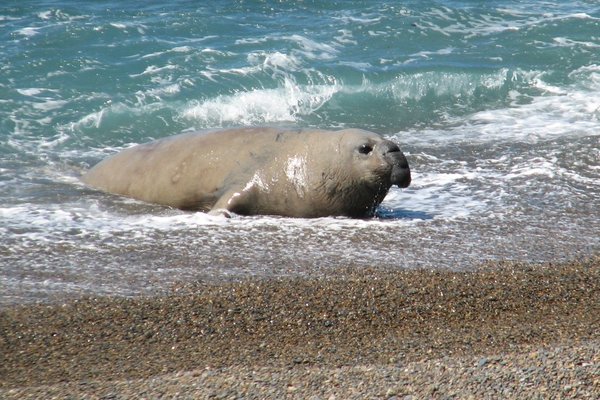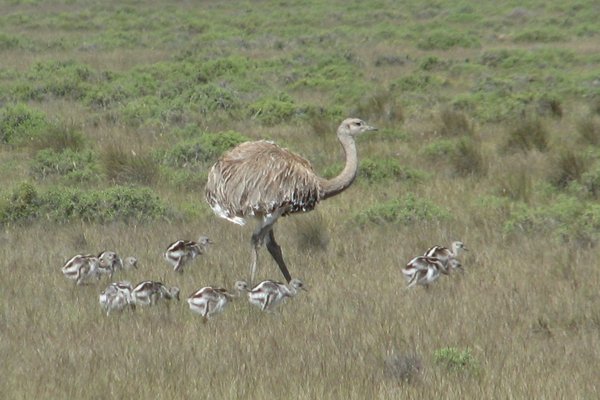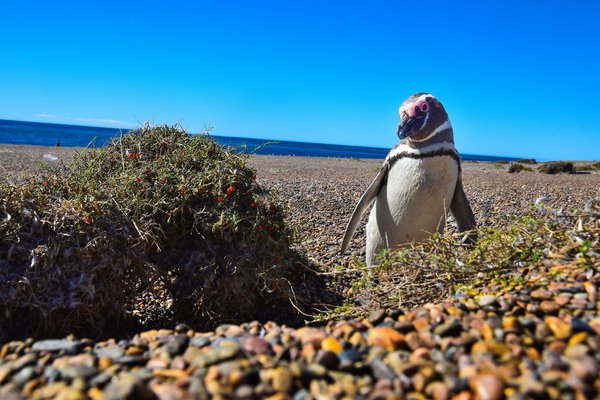Argentina
Peninsula Valdes
Península Valdés comprises the most important breeding grounds of the Southern Right Whale and is the habitat of several other marine mammals.
Only 11 km wide, the narrow Valdes Peninsula has a dynamic coastal zone with active sand dunes and numerous cliffs, bays and lagoons. Over 1,500 Southern Right Whales visit its waters yearly to breed, and the area is essential for their conservation. It is also home to elephant seals, sea lions, orcas and penguins.
Community Perspective: Try to arrive “in season” to see the whales, elephant seals and orcas, as highlighted by Solivagant. Whale-watching tours are organized from the town of Puerto Pirámides, and more general tours of the peninsula’s wildlife from Puerto Madryn as well. You can also self-drive in the park, as described by Timonator. Or look for penguins, as J_neveryes did.
Site Info
Official Information
- Full Name
- Peninsula Valdes (ID: 937)
- Country
- Argentina
- Status
-
Inscribed 1999
Site history
History of Peninsula Valdes
- 1999: Inscribed
- Inscribed
- Type
- Natural
- Criteria
- x
Links
- UNESCO
- whc.unesco.org
- Official
-
- peninsulavaldes.org.ar — Peninsula Valdes
- Related
-
- editors.eol.org — The Encyclopedia of Earth
All Links
UNESCO.org
- whc.unesco.org — whc.unesco.org/
Official Website
- peninsulavaldes.org.ar — Peninsula Valdes
Related Resources
- editors.eol.org — The Encyclopedia of Earth
News Article
- Feb. 4, 2014 plosone.org — Climate Change Increases Reproductive Failure in Magellanic Penguins
- Sept. 24, 2012 guardian.co.uk — Plan to shoot seagulls that attack whales
- March 21, 2010 laht.com — Die-Off of Whales in Argentina's Patagonia Region Sparks Alarm
Community Information
- Community Category
- Natural landscape: Marine and Coastal
Travel Information
Recent Connections
-
Oceanic Dolphins
Commerson’s, Dusky, and Peale’s dolphin…
-
Perfect Inscriptions
1999 -
Mudflats
"a diverse mosaic of wetlands, mudflats…
Connections of Peninsula Valdes
- Individual People
-
-
Magellan
visited 1520
-
- Geography
- Trivia
-
-
On Banknotes
On the 200 Argentinian peso banknote (2016)
-
- Ecology
-
-
Lagoons
-
Dunes
sand dunes (UNEP-WCMC) -
Tidal effects
The Isla de los Pajaros is an 18 ha island 800m off the southeast coast of Golfo San José connected to the mainland at low tide (UNEP-WCMC) -
Steppe
The dominant vegetation is Patagonian desert steppe scrub (UNEP-WCMC) -
Seals
elephant seal, sea lion, fur seal -
Ratites
lesser rhea -
Mudflats
"a diverse mosaic of wetlands, mudflats, dunes and cliffs" (OUV) -
Whales
Southern Right Whale and Orca (the peak season for orcas is only 10 or 15 days during the sea lion pup season (Feb/Mar) and elephant seal pup season (Sep/Oct)). -
Mammal Migrations
Elephant Seals and Southern Right Whales -
Penguins
Magellenic: Five reproductive colonies have been identified at Península Valdés: Isla de los Pajaros, San Lorenzo farm, outer Caleta Valdés, Islands of the Caleta Valdés, inner Caleta Valdés. -
Oceanic Dolphins
Commerson’s, Dusky, and Peale’s dolphins, Long-finned pilot whale (UNEP-WCMC)
-
Salt Flats
"An interesting basin (42 meters below sea level) contains two salt flats, "Salinas Chica", 12 km2 in area, and "Salinas Grande", 35 km2". -
Antarctic Floristic Kingdom
-
Flamingos
Southern Flamingo (Phoenicopterus Chilensis) - "Salina Chica is the natural habitat of Artemia Salina, a crustacean that lays its eggs when the water begins to evaporate, waiting for new rains to flood the salt lakes. This crustacean gives a pink hue to the salt lakes and attracts flamingos that come to feed."
-
- World Heritage Process
-
-
Inscribed on a single criterion only
x. to contain the most important and significant natural habitats for in-situ conservation of biological diversity, including those containing threatened species of outstanding universal value from the point of view of science or conservation. -
Perfect Inscriptions
1999
-
- Human Activity
-
-
Salt
34-km. narrow gauge railway line from Puerto Pirámides to the salt ponds, known as Salinas Grandes (1901-1920)See en.wikipedia.org
-
- Constructions
-
-
Railways
A railway operated between Puerto Pyramides and the salt evaporation pond of Salina Grandes from 1901 to 1920.See en.wikipedia.org
-
Lighthouses
-
Purpose Built Visitor Centre
Core Zone date unknown. "Centro de Visitantes Istmo Carlos Ameghino". situated 22kms inside the Area Natural Protegida" on the road to Puerto Pyramides
-
- WHS on Other Lists
-
-
Centres of Plant Diversity
SA46 Patagonia - "Both the coastal areas, a diverse mosaic of wetlands, mudflats, dunes and cliffs, and the land area, a distinct and relatively intact part of the Patagonian Desert Steppe, harbour diverse flora and fauna of high conservation value." -
World Biosphere Reserves
Valdés -
Ramsar Wetlands
Humedales de Peninsula Valdés (2012)See whc.unesco.org
-
- Timeline
-
-
Early Pleistocene
Esta roca esta formado por diversos perfiles de la era Terciaria, y entre 25 a 2 millones de anos se sucedieron diferentes ingresiones y regresiones del mar, sumado a cambios de temperatura y corrientes que generaron diversos estratos que hoy vemos representados por ejemplo en el alto acantilado de la Punta del mareógrafo en Puerto Piramides.
-
- WHS Names
-
-
Named after individual people
Antonio Valdés y Baz
-
News
- plosone.org 02/04/2014
- Climate Change Increases Reproduct…
- guardian.co.uk 09/24/2012
- Plan to shoot seagulls that attack…
- laht.com 03/21/2010
- Die-Off of Whales in Argentina's P…
Recent Visitors
Visitors of Peninsula Valdes
- Andrew0181
- Aspasia
- Atila Ege
- Bill Maurmann
- Bram de Bruin
- Carlos Sotelo
- Chinmaya
- Daniel Chazad
- dave wood
- Delphine Delaunay
- Ellen Nielsen
- Els Slots
- Erik Jelinek
- Eva Kisgyorgy
- Frédéric M
- Gabbro
- George Gdanski
- giloudepuertorico
- Grendel Gongan
- Hammeel
- hotpickle
- Iain Jackson
- Jan Zimmermann
- Jarek Pokrzywnicki
- J_neveryes
- João Aender
- Jon Opol
- Luis Filipe Gaspar
- Lukasz Palczewski
- lynnz317@aol.com
- Michael Ayers
- Michael Novins
- Michael Turtle
- Morodhi
- nan
- Nihal Ege
- Patrik
- Patrik_globe
- Petteri
- Reisedachs
- Reza
- Rosemary
- Sergio Arjona
- Solivagant
- Stanislaw Warwas
- tedchang
- Tevity
- TheTravelingRanger
- Thomas Buechler
- Thomas van der Walt
- Timonator
- Timothy C Easton
- Tinuszke
- Traveling Girl
- triath
- Weecheng
- zfish
- Zizmondka
Community Reviews
Show full reviews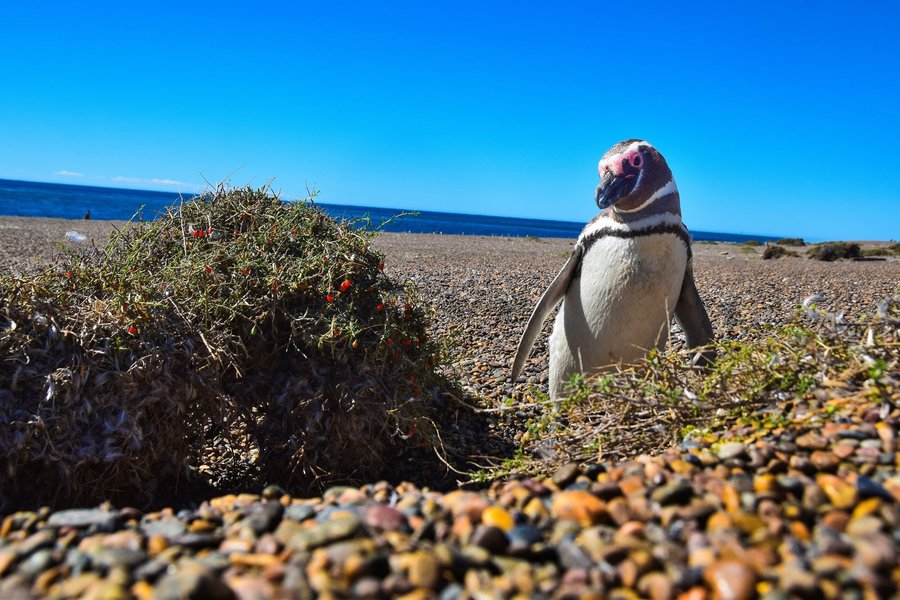
Penguins are cute.
That's an indisputable, undeniable, and universal fact.
They are so adorable that the eleventh selection criteria for whether a site should be included in the World Heritage List should be, "Are penguins there?"
I travelled to Peninsula Valdes in early March 2025 and explored it for one day with a rental car. Although Peninsula Valdes is in Patagonia, its landscape is not the one that most people picture of Patagonia. There are no majestic mountains peaks, raging rivers, or striking valleys here. But you don't come to Peninsula Valdes for the scenery. You come here for the animals, especially the penguins, whales, elephant seals, and sea lions.
I understand that what animals you get to see, in what quantity, and where you see them are dependent on when you visit. So, just be aware that your animal observing experience may differ from mine.
When I explored Peninsula Valdes, the only area where there was a substantial number of penguins, seals, and sea lions were near the Punta Norte area. Conversely, there were only one-handful of these animals in the Caleta Valdes area.
Estancia San Lorenzo Nature Reserve, near Punta Norte, was by far the highlight of the peninsula. Estancia San Lorenzo is a private reserve that provides guided tour of a beach where thousands of Magellan penguins congregate. You can get very close to these waddling creatures, who are far more interested in catching the sun rays than to pay any attention to you. I pause to …
Keep reading 0 comments
I have visited Peninsula Valdés beginning of December 2022. I was staying in La Tosca Hostel in Puerto Madryn with my girlfriend and we decided to rent an (expensive) car for two days to visit the Península for two days. The car cost 56.000 ARS which was at this time about 80€ per day with the beneficial Westerm Union Blue Dollar rate to obtain Pesos. Petrol for 2 days would cost around 10.000 ARS for about 500-600 km that we drove. In the hostel we were able to take two other travellers with us for the first day so we could share the experience and cost with them which made it for this day slighly less expensive for us than a guided tour in addition to the fact that we do not like guided tours that much as we prefer to take our own speed.
The drive onto the peninsula is already almost an hour from Puerto Madryn. You will pass by an entry point on which you need to pay the entry fee for the park. After another half an our of driving you will reach the info center which will give you information on flora and fauna of the peninsula. However the information e.g. on Orcas in the water is even within the info center contradictory. So we found it a bit tricky. There is also a viewpoint from which you can see over the landscape which looks pretty much like the rest of the region (many …
Keep reading 0 comments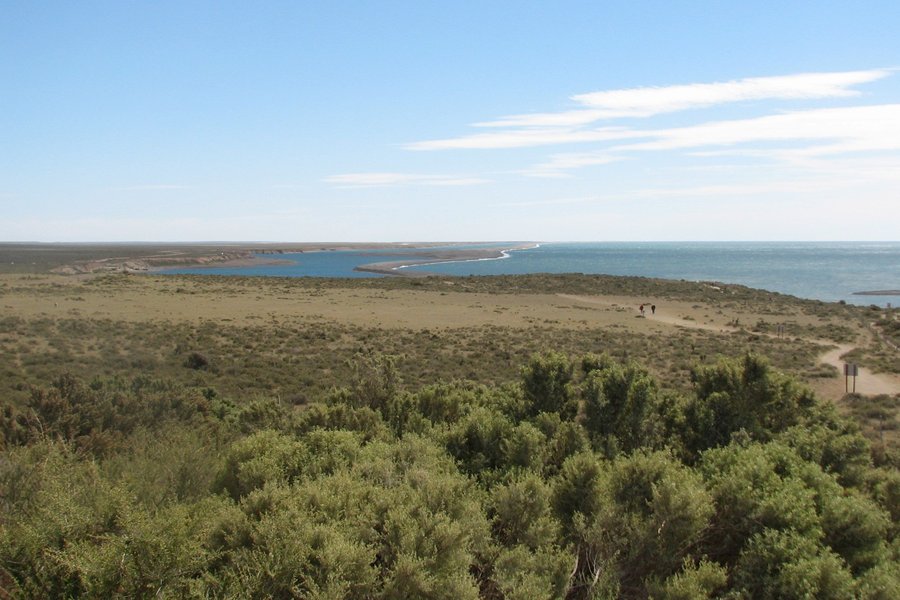
I went with a friend to Peninsula Valdes in Sept 2017. We flew in to Trelew and rented a car. We did need to taxi from the international airport to the domestic airport in Buenos Aires, which was a bit of a hassle and took up a bit of time.
The driving itself was easy and uneventful. The roads were fine and we arrived around dusk. We spent the first night in Puerto Madryn, which is a small city south of our destination, which was Puerto Piramides, a tiny town to the north. We drove to Puerto Piramides after breakfast the next day. On our way up, we pulled over many times to enjoy watching the frolicking whales, which were astonishingly close to shore. In some places, you could see 6 or more in a glance. We were pleased with this, since wildlife viewing was the purpose of this excursion.
Our excursions in Puerto Piramides included the Yellow Submarine whale viewing, and we were not disappointed. There were many, many whales and dolphins. It was a bit crowded below deck so we mostly were on top.
We drove up to the point and hiked down to the beach the next day. There are vast sheep ranches in this area, and guanacos, burrowing owls, some kind of wild cat, an armadillo (sadly, deceased) and many birds were seen on the drive. At the beach, we saw vast numbers of sea lions and a few sea elephants. We looked …
Keep reading 0 comments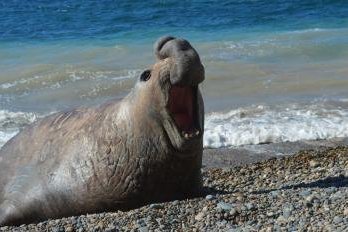
In October 2017, I spent a few days at Península Valdés, probably the best place on the South American mainland to see marine wildlife, where I saw nesting Magellanic penguins (the penguins were generally indifferent to visitors and waddled to within a few feet of me, often too close for photography), southern right whales (which visit the warm waters surrounding the peninsula between May and December to mate and give birth), guanacos, rheas and Patagonian mara. But the best wildlife viewing was around 50 miles from Puerto Madryn at Punta Ninfas, where my guide and I climbed down 300 ft cliffs to a rocky beach that’s home to several breeding harems of southern elephant seals. Due to the tricky descent, the beach doesn’t receive many visitors, and I was the only visitor during my three-hour stay. In addition to the elephant seals, I was lucky to see several killer whales patrolling the coastline, but they didn’t attempt to capture any of the baby seals resting along the shoreline — the area is famous for orcas that employ this unique hunting style. I visited the peninsula and Punta Ninfas with Marcos from Catalejo Travel -- he was one of the best naturalists that I have encountered.
Keep reading 0 comments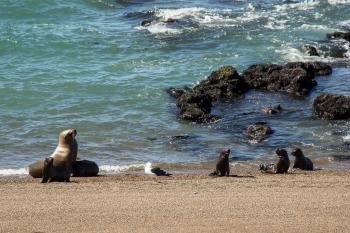
I think the authorities have done an excellent job of protecting the peninsula and making it accessible for tourists. There are a lot of information booths and good viewing points so you can see the animals and the landscapes. But visitors are also kept a respectful distance so as to not disturb the wildlife.
I organised a tour through my accommodation in Puerto Madryn and was happy doing it that way.
Keep reading 0 comments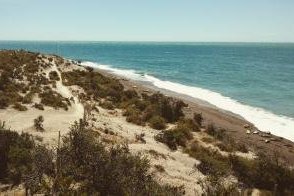
Peninsula Valdes is a world heritage site primarily about the fauna you can find on the peninsula. You get to see whales, penguins and sea lions. With a little luck you may also stumble across an Orca swimming near the shore line. The landscape is very similar to Patagonia overall with the noted exception of the sand cliffs and beaches.
To explore the peninsula I booked a tour. The island is way too large to do any exploring by foot or by bike and the sites too far apart. You end up spending loads of time driving across the island to get to the different view points. Our guide estimated that a round trip from Puerto Madryn is about 450km, a good part of it on gravel roads.
To really get to see all the animals you will probably need multiple days and tries. On my day trip I saw penguins, sea lions and whales, but no Orcas. Also, the whales didn’t come that close to our boat. If you plan going, make sure to check the season and the presence of the animals.
Getting There
The hub for Peninsula Valdes is Puerto Madryn. There is a local airport, but most flights go via Trelew. There is a shuttle service from Puerto Madryn to Trelew (Transfer PMY) which you can preorder online or in your hotel and it provides a connection to all flights, even the early ones. However, they forgot my reservation and I only …
Keep reading 0 comments
Inside the Valdes Peninsula there are only one village, Puerto Piramides and you can sleep there, this beautifull place is waiting for you. Every year, hundreds of Southern Right Whales close in on the waters of the Valdes Peninsula, Province of Chubut. Puerto Piramides is the only port town offering Whale Watching tours.Its surroundings are ideal for all sorts of open air activities and excursions, as well as for catching up on your rest and dinning, so you pay the entrance only one time and enjoy the wonders that nature has stored in this World Heritage. You can visit the site of this village www.puertopiramides.gov.ar
Keep reading 0 comments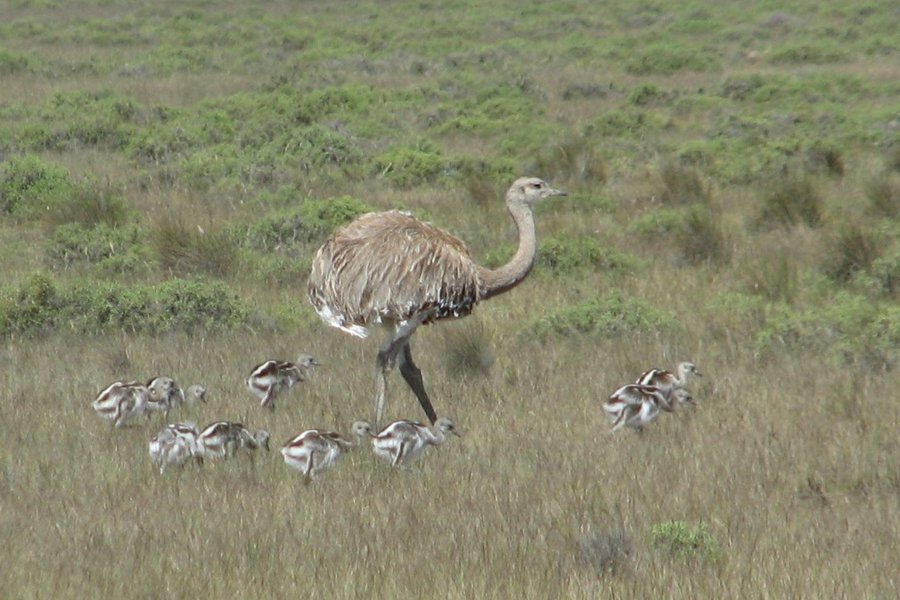
On first impression, Peninsula Valdes is much like the Patagonian mainland: a flat land full of scrub able to withstand the strong winds, dotted with huge private sheep farms. Several common animals have run over the isthmus too: for example, the Patagonian hares (maras), which are like giant cavies, and the speedy rheas with their chicks.
Our first real stop was at the beach where the Elephant seals live. They seemed a sleepy bunch, lazing around in the sun. Almost all of the 100 or so we saw were females or calves. One big bull was defending the beach. However, there was one moment of suspense: a younger bull casually swam along the coastline looking for a female to mate with. When he had found two lying close to the water, he decided to take his chance and quickly lugged himself up to the beach. The big bull wouldn’t have anyone touch his women, though, and gave out a roar (without even bothering to move an inch). This message was fully understood by the younger one and he quickly retraced his ‘steps’ and went back to the sea.
The morning hadn’t started well for the seals – a few hours before an orca had come up to the beach and grabbed one of the elephant seals. National Geographic was there at the right moment (the photographer was just leaving when we arrived), and of course, had it all on camera!
Whale Watching obviously is the highlight of anyone’s visit here. …
Keep reading 0 comments
I visited the Penisula Valdez in November of 1983. In my visit, I saw Sea Lions lounging on the beach at Punta Norte; a literal mass of birds on Isla de los Pajaros; an enormous Elephant Seal on the eastern shore; and viewed right whales from the bluff overlooking Puerto Piramide. It was a long time ago and I understand that the area has seen many improvements. This was a memorable trip and I look forward to a return visit in the future.
Keep reading 0 comments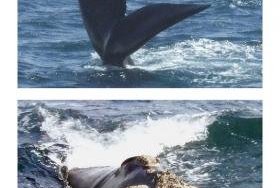
Peninsular Valdes offers some of the best opportunities of any continental location worldwide to view 3 iconic marine mammals – Whales (The “Southern Right” in this case), Elephant Seals and Orcas (or “Killer Whales” – though strictly these are “Ocean Dolphins” rather than “Whales”). Add to these further creatures such as penguins, sea-lions and a sample of Patagonian terrestrial animals such as Guanaco, Armadillo, Rhea and Mara (“Hare”) and anyone interested in wildlife will find plenty to see! The UNESCO site covers both the terrestrial Peninsular and the waters of the Gulfs to its north and south.
However, as always with wildlife, time is needed if you want to get those views you may have seen in National Geographic programs! You also need to choose the optimal months and these do not coincide for all 3 of the iconic species. Our most recent (and second) visit was in early November 2007. This was determined by our schedule for visiting S Georgia and the Antarctic. Our experiences were as follows
ELEPHANT SEALS. September/October might have been more optimal since most of the males, having arrived around August, had already left and their spectacular “fights” were not on view. It must also be said that, for those who are going on to S Georgia or the Antarctic, the views of Elephant Seals on Valdes are somewhat “tame” compared with what you will see later since the numbers are considerably lower and the viewing (understandably) is kept to a distance of around 200 …
Keep reading 0 comments
